Labelling a triangle
As we see below, whenever we label a triangle, we label sides with lowercase letters and Angles with uppercase letters. Opposite Angles and sides are labelled with the same letter.
 Example of a labelled triangle, Tom Maloy, StudySmarter Originals
Example of a labelled triangle, Tom Maloy, StudySmarter Originals
The sine rule
For a triangle with the form above, the sine rule formula is defined as:
We can also write this as:
We can interpret the sine rule like this: the Ratio between the length of the side and the opposite angle is constant in any triangle. We use the sine rule when two angles and two lengths are involved. There are two situations where we will use the sine rule:- When there are two angles and one side given, and we need to find the length of another side.
- When there are two lengths and one angle given, and we need to find another angle.
Example 1
Q: Find x.
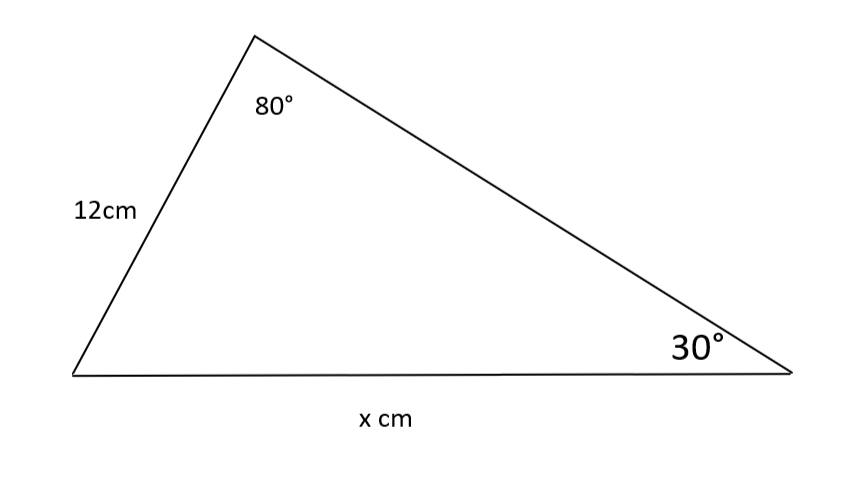
A: Using the sine rule, we know that , and we can rearrange for x to get , which gives x = 23.6 (3 sf).
Example 2
Q: Find y.
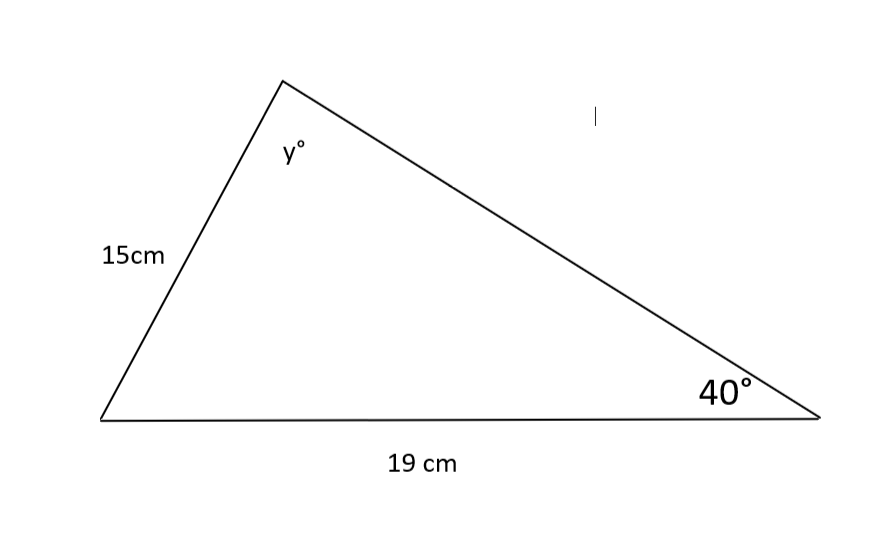
A: Using the sine rule, we know that , which rearranges to give , thus giving y = = 54.5 ° (3.sf).
The cosine rule
Using the same example, the cosine rule formula is defined as: a² = b² + c²-2bc · cos (A)
If we rearrange this to give A, we get: We use the cosine rule when three lengths and one angle are involved. Questions will either give three sides and we need to find an angle or give two sides and an angle, and we will need to find the length of the side.
Example 1
Q: Find x.
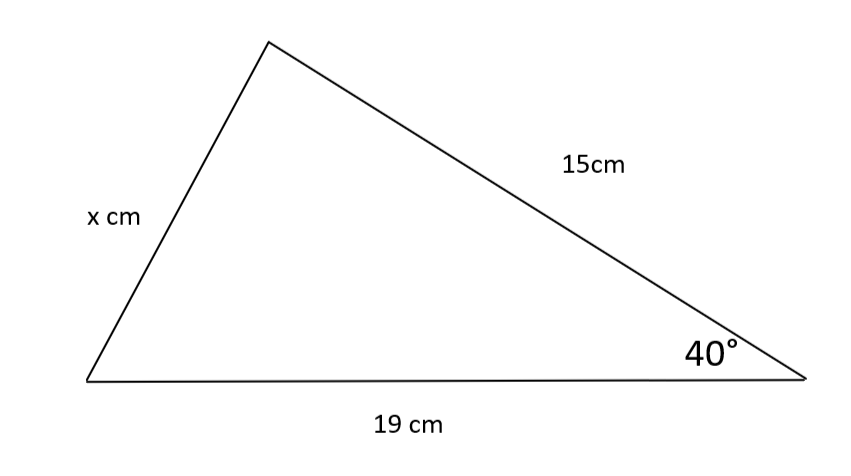
A: Using the cosine rule, we get that x² = 15² + 19² -2 · 15 · 19 · cos (40) = 149.354667 ..., which then gives x = √149.354667 ... = 12.2 (3.sf)
Example 2
Q: Find y

A: Using the rearranged cosine rule, we get y = = 27.7 (3.sf)
How are the sine and cosine rules derived?
Now that we have seen what each rule is and how they work, we will look at how we get to each of them by deriving them from first principles. These may look complicated at first, but we will be using some Trigonometry and Pythagoras' theorem.
Derivation of the sine rule
Let us start with a triangle as above, but draw a line down from the top angle so that we now have two right-angled triangles, and call this line h, as shown below.
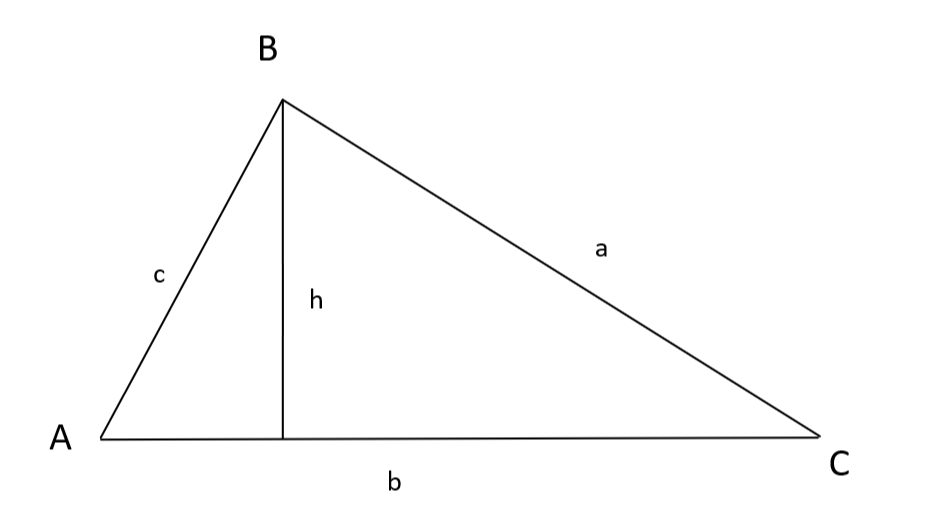
Using trigonometry, we have sin (A) = h / c , and sin (C) = h / a . We can now rearrange these for h to get h = c sin (A) and h = a sin (C) . Set these equal to each other to get c sin (A) = a sin (C) . These now rearrange to , or equivalently . We can then repeat this method with the other two angles to get the results. We then get to our desired result of
Derivation of the cosine rule
We will now do the same with the cosine rule. We start with the same triangle, draw the same line down to create two right-angled triangles, and call this line h. We call the point that this line touches the bottom D and state that one side of the line has length x, and the other , as shown below.
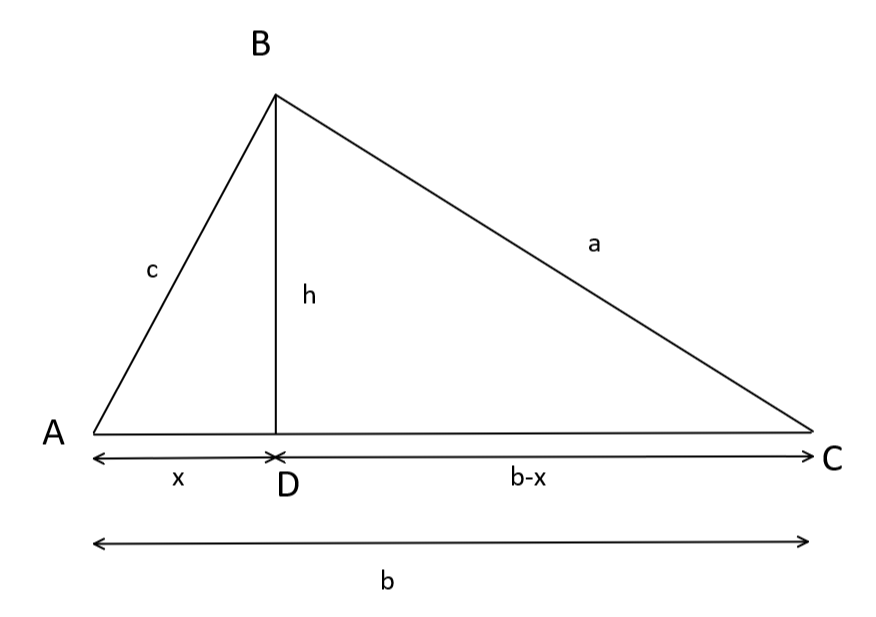
By Pythagoras' theorem on the left triangle, we get x² + h² = c², and we will rearrange this to
x² = c²-h² ......... (1) Doing the same to the right triangle, we get , and we will expand this to b²-2bx + x² + h² = a² ....... ... (2) If we take the cosine of angle A, we get cos (A) = x / c, which rearranges to
.......... (3). We will now substitute (1) and (3) into (2), using (1) to get rid of the x², and (3) to replace the x in 2bx. Substituting in: b² -2b (c · cos (A)) + c²-h² + h² = a². We can then simplify this to a² = b² + c²-2bc · cos (A), which is our desired result.
Sine and Cosine Rules - Key takeaways
- We use the sine and cosine rules when working out sides and angles on non-right-angled triangles.
- We use the sine rule when we have one unknown value and three known values from two angles and two sides.
- We use the cosine rule when we have one unknown value and three known values from one angle and three sides.
- Both the sine and cosine rules can be derived from first principles.














